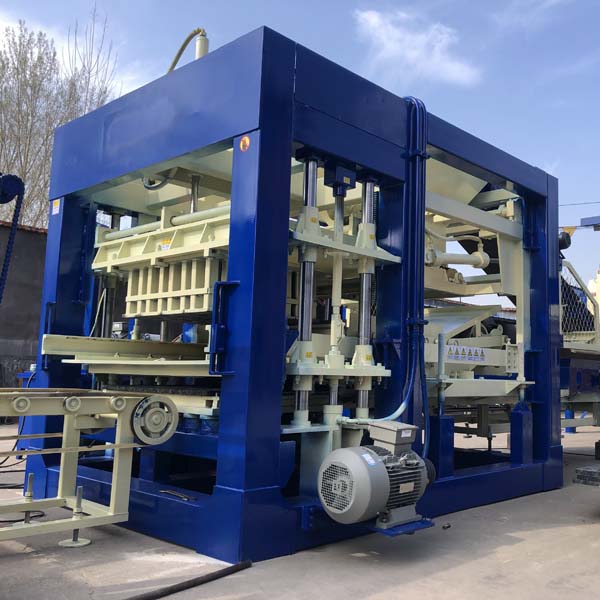
Concrete, one of the most ubiquitous construction materials, has been a cornerstone of human ingenuity for centuries.
However, as the construction industry evolves, so too does the technology that shapes it.
The advent of advanced block machine solutions has breathed new life into concrete, transforming it from a traditional building material to a canvas for innovation.
This essay delves into the transformative journey from idea to reality, exploring how advanced block machine solutions are reshaping concrete construction.
We will delve into the key features of these technologies, their benefits, challenges, and the profound implications they have for the future of building.
The Genesis of Advanced Block Machine Solutions
The idea of advanced block machine solutions emerged as a response to the limitations of traditional concrete construction.
Manual labor-intensive processes often resulted in inefficiencies, irregularities, and inconsistencies in construction projects.
However, with the convergence of engineering expertise and technological innovation, advanced block machine solutions were born.
These solutions leverage cutting-edge automation, precision engineering, and sustainable practices to create concrete blocks that are not only stronger and more durable but also customizable and versatile.
This transformation reflects the marriage of human ingenuity with technological prowess, turning an age-old material into a platform for limitless possibilities.
Key Features and Benefits
Advanced block machine solutions are characterized by a range of key features that elevate the versatility and performance of concrete blocks.
One of the standout features is precision. Computerized controls and automation ensure that every block produced adheres to exacting specifications, leading to consistency in size, shape, and quality.
This precision eliminates many of the inconsistencies that have historically plagued traditional concrete construction.
Moreover, advanced block machine solutions offer enhanced customization.
Builders can create an array of block sizes, textures, and shapes to suit their design visions.
This newfound flexibility allows for the creation of architectural marvels that were once constrained by the limitations of conventional concrete construction.
Another notable benefit of these solutions is increased efficiency.
Automation streamlines the block-making process, reducing production times and labor requirements.
The resulting time and cost savings translate into more economical construction projects that can be completed in shorter timeframes.
Challenges and Technological Progress
While the advantages of advanced block machine solutions are undeniable, their widespread implementation is not without challenges.
Initial costs, particularly for acquiring and setting up the machinery, can be a deterrent for some construction firms, particularly smaller ones.
The integration of automation also necessitates a skilled workforce capable of operating and maintaining these complex machines.
Technological progress and industry collaboration are crucial for overcoming these challenges.
Research and development initiatives can lead to the design of more cost-effective and user-friendly solutions.
Moreover, educational institutions and vocational training programs can equip the construction workforce with the skills required to harness the full potential of advanced block machine solutions.
Sculpting the Future of Construction
The implications of advanced block machine solutions extend far beyond the realm of construction.
They are shaping a future where creativity knows no bounds and where structures can be more than just utilitarian spaces.
These solutions empower architects and builders to craft buildings that are not only functional but also works of art.
Architectural designs that were once considered too complex or intricate are now within reach, thanks to the precision and versatility of advanced block machine solutions.
From geometric facades to organic forms, these technologies enable the translation of abstract concepts into tangible structures, challenging the traditional boundaries of concrete construction.
Sustainable Paradigms and Eco-Friendly Innovation
One of the most significant impacts of advanced block machine solutions lies in their contribution to sustainable construction practices.
These solutions are designed with environmental consciousness in mind, offering a range of eco-friendly benefits.
Sustainable binders, recycled aggregates, and reduced energy consumption all contribute to a lower carbon footprint for construction projects.
Additionally, the enhanced durability and thermal properties of blocks produced by advanced block machine solutions contribute to energy-efficient buildings.
The resulting structures require less heating and cooling, thereby reducing energy consumption and greenhouse gas emissions over their lifetimes.
In conclusion, the transformation of concrete through advanced block machine solutions marks a paradigm shift in the construction industry.
From the inception of the idea to the realization of tangible structures, these solutions have redefined what is possible in construction.
Their key features, benefits, challenges, and far-reaching implications provide a comprehensive glimpse into the evolution of building practices.
As the construction industry continues to embrace advanced block machine solutions, it sets a course toward a future where innovation and creativity merge seamlessly with functionality and sustainability.
The transformative power of these solutions is a testament to human ingenuity and the potential of technology to shape the built environment.
From the simplest of structures to the most intricate architectural wonders, advanced block machine solutions are rewriting the narrative of concrete construction, proving that even the most ancient of materials can be a canvas for innovation.
